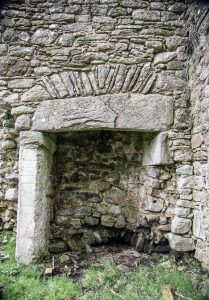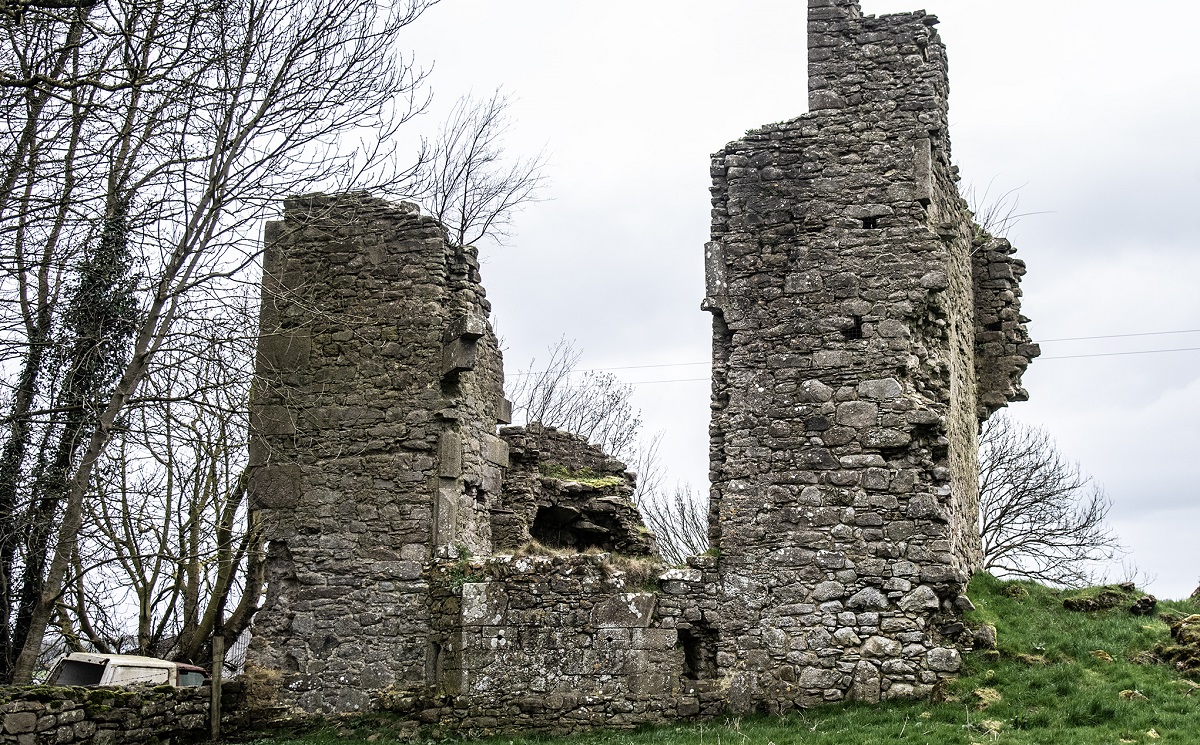The village of Drumquin owes its origins to an historic castle which now lies in ruin. Though tarnished by time, the remains of Kirlish Castle still remain a focal point for community activities within the village as a hub for Drumquin Archery Club.
Often referred to as Castle Curlews, its history can be traced back to the early 1600s.
It was built by Sir John Davies, an English poet, politician, and later Attorney General of Ireland, who also owned Derg Castle at the same time.
The area was part of 2,000 acres in West Tyrone granted to Sir John in 1610, under the scheme for the Plantation of Ulster.
Alongside his works on Castlederg, Sir John took to the village lands and built his ‘home-away-from-home’, with construction starting in 1611.
Records at the time said that his agent, Will Bradley, was preparing materials, with four farmers, a leaseholder and carpenter being sent to the land for the construction.
It is rumoured that his new castle was built upon an existing stone tower found at the site, as records of activity in Drumquin date back to 1211, and his architects built a new castle surrounding it.
As part of the design, a straight seven-mile-long causeway was cleared between the Kirlish Castle and Castlederg to connect the two sites owned by Sir John.
This walk, while obscured as time passed, can still be traversed today by adventure lovers and locals alike, so long as they have a keen eye for the remaining features.
The parameters of the castle measured 22 feet tall, 19 feet between each wall and in length 36 feet.
The castle itself was built with local stone and it consisted of at least three towers, the surrounding walls and in later years the site’s bawn was added.
It was much smaller in size compared to his castle in the Derg, yet it consisted of two chimneys within the confides of its towers.
Though it is not known how frequently Sir John stayed in Kirlish Castle, more surviving records allude to longer stays in his Castlederg property.
After losing his bid to take the role of Solicitor General of England and Wales, Sir John took spite and resigned as Attorney General to Ireland and returned to his homeland in 1619.
He later died in 1626, leaving his Tyrone properties to his daughter Lucy.
However, she had very little interest in the castles and they were left to rot.
After his departure from Ireland, the Castle in the Derg saw attacks from the O’Neill clan during the 1641 rebellion, however it seems that Castle Kirlish saw little to no violence during the time.
Over centuries of inactivity, the castle has fallen to ruins, and today. all that remains is three of the towers with two chimneys and fireplaces still intact.

In and among the towers are gaps for once sitting bay windows and the grounds of the structure still align with what was once a wooden floor.
However, an archaeological study of the ruins in 2007 by Queen’s University, Belfast, made some interesting structural and agricultural discoveries.
In recent times, the castle ruins have found themselves at the forefront of community events within the village.
Moreso, in a link to the period during which the castle was built, some locals have taken up the weapons perhaps used by their forefathers.
Members of Drumquin Archery Club have also taken to using the site for target practice with their bows.







